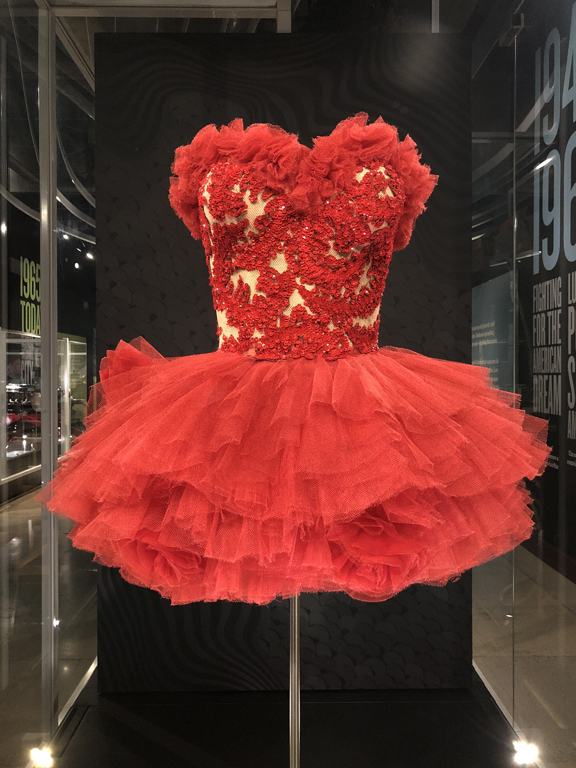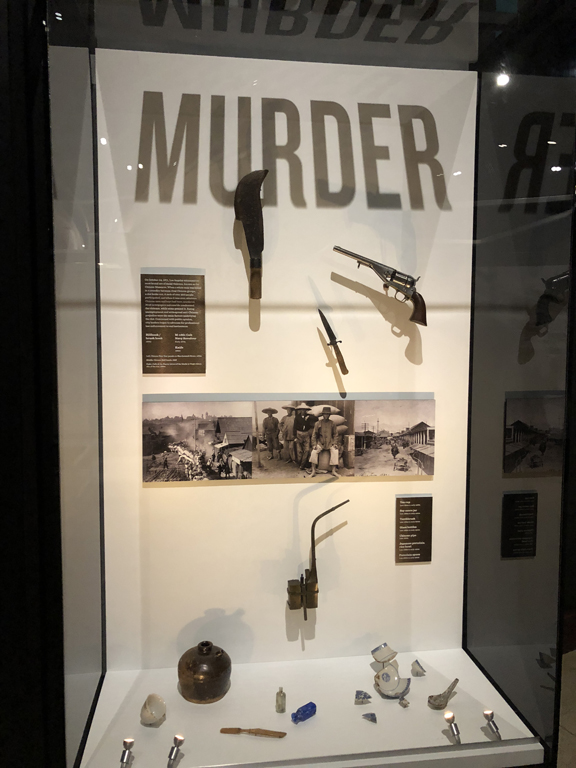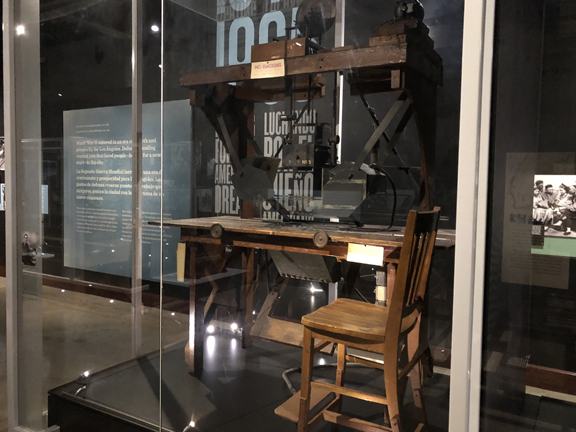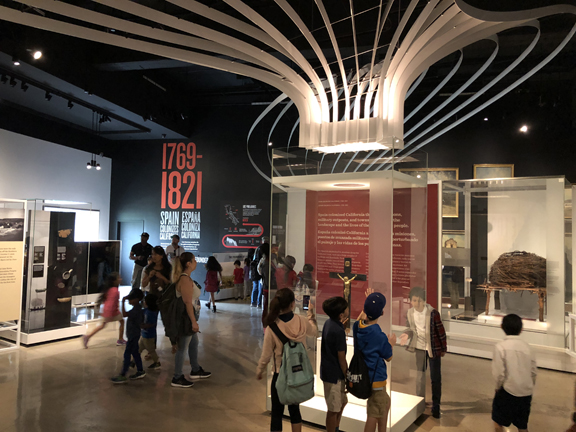
Charly SHELTON
A greatly expanded section of the Natural History Museum exhibit “Becoming LA” is on The First Angelenos, the Indigenous Californians.
By Charly SHELTON
Los Angeles has been many things: a pathway and stop along the route to other lands for migrating animals at the end of the last great ice age, a homeland for the Gabrieleño/Tongva tribe of Native Californians, a bustling rancho for Mexican land owners, a much fought-over sliver of property exchanged between countries, bountiful farm land for those looking to strike it rich, a movie capital, a world city.

LA is a big, vibrant, beautiful mesh of every culture, language, business and dream the world over. It is, for many who live or visit here, the greatest city on Earth. What better place to learn all about what makes LA, LA than at the resident history museum.

The Natural History Museum of Los Angeles County features “Becoming Los Angeles,” an exhibit detailing the history of the City of Angels from the first humans settling the area through today. The exhibit opened in 2013 to rave reviews and, over the next four years, the museum gathered input from guests and experts on what needed to be added. It closed briefly but has now reopened with updates to some sections, newly commissioned artwork by local artists, and newly added artifacts from the NHMLA archaeology/anthropology collection. Most notably, the update includes a greatly expanded section on The First Angelenos, the Indigenous Californians. Through photos, artwork and stories from modern and historical Native Californians, the exhibit paints a picture of what LA was like for thousands of years prior to 1542 when Spanish explorers ventured into Alta California and encountered the indigenous peoples of LA.

Other new artifacts of interest among the collection bring with them new stories helping to build a more complete picture of the tapestry of LA history. New artifacts include a visibly-used saddle and riata (lasso) to bring down a bull that would have been used by a Mexican vaquero (cowboy) more than 150 years ago, directly influencing the American cowboys of yesterday, today and timeless cinema; a Singer sewing machine from the tailor Alpert of Hollywood, accompanied by the stories of female garment workers and their fight to unionize and negotiate for higher wages, paid leave and a 35-hour work week; and Betty Grable’s red tutu costume from the 1945 film “Diamond Horseshoe,” for which the sequins had been recycled due to wartime rationing, forcing filmmakers to scale back costume designs and set construction.

These join the collection that already included a scale model of the city of Los Angeles, a bottle of water embossed with “Souvenir First Water from Los Angeles Aqueduct, November 5th, 1913,” a gold crucifix dating to 1774 that Spanish solider Cornelio Avila carried with him overland from Arizona to California as a member of Spain’s first land expedition to Alta California, and Walt Disney’s animation stand, which he built by hand out of an old packing crate and a secondhand Pathé camera, and used to photograph a new character he had just come up with – Mickey Mouse.
On a personal note, as someone who has seen museums around the world, I can say that this is one of the best historical exhibitions in any museum I’ve been to, and the updates only make it that much better. “Becoming Los Angeles” is a permanent exhibition at the Natural History Museum of Los Angeles and it is reopened now. For more info, visit NHM.org/BecomingLA.
